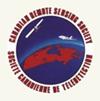多源遥感数据与基于层次的分类方法的集成支持湿地分类
IF 2.1
4区 地球科学
Q3 REMOTE SENSING
引用次数: 1
摘要
摘要通过两种层次方法,使用先进的分类算法,开发了从遥感数据中对湿地(Open Bog、Treed Bog、Open Fen、Treed Fen和Swamps)进行分类的方法。所使用的数据包括多光谱光学和热数据(陆地卫星5号和8号)、雷达图像(哨兵1号)和数字高程模型。目标是通过基于层次的分类方法确定组合图像对湿地进行分类的最佳方式,以产生比标准分类更准确、更高效的地图。使用的算法有随机森林(RF)和朴素贝叶斯。基于分层的RF分类方法产生了最准确的分类结果(91.94%)。与非分层分类器相比,基于分层的方法还提高了通过特征分析定义的低质量数据的分类精度。与标准方法相比,分层方法还显著提高了Naïve Bayes分类器的分类精度(增加了~12%),同时没有显著增加计算时间——与RF测试的精度相当,计算工作量约为20%。使用对数正态或RF变量重要性分析预选光谱带、偏振和其他输入参数(归一化差异植被指数、归一化差异水分指数、反照率、斜率等)在识别低质量特征和高质量特征方面非常有效。本文章由计算机程序翻译,如有差异,请以英文原文为准。
The Integration of Multi-Source Remotely Sensed Data with Hierarchically Based Classification Approaches in Support of the Classification of Wetlands
Abstract Methodologies were developed to classify wetlands (Open Bog, Treed Bog, Open Fen, Treed Fen, and Swamps) from remotely sensed data using advanced classification algorithms through two hierarchical approaches. The data utilized included multispectral optical and thermal data (Landsat-5, and Landsat-8), radar imagery (Sentinel-1), and a digital elevation model. Goals were to determine the best way to combine imagery to classify wetlands through hierarchically based classification approaches to produce more accurate and efficient maps compared to standard classification. Algorithms used were Random Forest (RF), and Naïve Bayes. A hierarchically based RF classification methodology produced the most accurate classification result (91.94%). The hierarchically based approaches also improved classification accuracies for low-quality data, as defined through feature analysis, when compared to a nonhierarchical classifier. The hierarchical approaches also produced a significant increase in classification accuracy for the Naïve Bayes classifier versus the standard approach (∼12% increase) while not significantly increasing computation time – comparable in accuracy to the RF tests for around 20% the computational effort. Preselection of spectral bands, polarizations and other input parameters (Normalized Difference Vegetation Index, Normalized Difference Water Index, albedo, slope, etc.) using log-normal or RF variable importance analysis was very effective at identifying low-quality features and features which were of higher quality.
求助全文
通过发布文献求助,成功后即可免费获取论文全文。
去求助
来源期刊

Canadian Journal of Remote Sensing
REMOTE SENSING-
自引率
3.80%
发文量
40
期刊介绍:
Canadian Journal of Remote Sensing / Journal canadien de télédétection is a publication of the Canadian Aeronautics and Space Institute (CASI) and the official journal of the Canadian Remote Sensing Society (CRSS-SCT).
Canadian Journal of Remote Sensing provides a forum for the publication of scientific research and review articles. The journal publishes topics including sensor and algorithm development, image processing techniques and advances focused on a wide range of remote sensing applications including, but not restricted to; forestry and agriculture, ecology, hydrology and water resources, oceans and ice, geology, urban, atmosphere, and environmental science. Articles can cover local to global scales and can be directly relevant to the Canadian, or equally important, the international community. The international editorial board provides expertise in a wide range of remote sensing theory and applications.
 求助内容:
求助内容: 应助结果提醒方式:
应助结果提醒方式:


